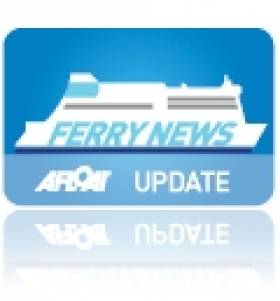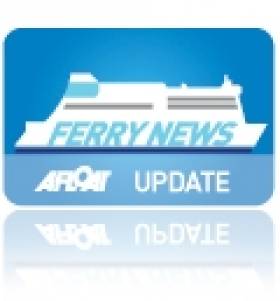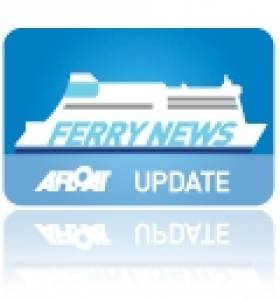Displaying items by tag: Birkenhead Twelve Quays Terminal
Birkenhead Ferry Terminal's New Truck-Drivers Lounge
#BirkenheadTerminal – Birkenhead's Twelve Quays ferry terminal from where Stena Line operates the Liverpool-Belfast route, has been fitted-out with a new truck-driver's lounge.
The work was carried out by local based contractor MPE Interiors which manufactured the new facility for freight customers using the Liverpool (Birkenhead)-Belfast route served by ro-pax sisters Stena Mersey and Stena Lagan. The route is the Irish Sea's longest distance service taking around eight hours sailing time.
Phil Taylor, MPE's newly-appointed property specialist, said the drivers' lounge at Stena Line's 12 Quays terminal in Birkenhead highlighted MPE's range of property services which had been completed on time and on budget.
He said: "This was a two-week project involving staff in our workshop and on location at the freight terminal. We manufactured and fitted bespoke fixtures and fittings include specially-curving TV cabinets, decorative pilasters, new lighting and a vending area. We also re-upholstered and cleaned furniture, while new vinyl flooring and carpeting featuring the Stena Line logo was also fitted.
"This is one of many works that MPE Interiors has done work for Stena Line's terminals. It follows other contracts to fit-out Stena Line ferries. We're determined to grow our ferry-related work further with Stena Line following this latest work."
The outfitters company in a previous contract had redeveloped the crew and officers’ mess areas of the ro-pax sisters.
Busier Times for Birkenhead
#Birkenhead – Busier times lay ahead for Birkenhead Twelve Quays Terminal next week when Stena Line introduce a third ship on the route to Belfast while today the Isle of Man Steam Packet resumed a winter service, writes Jehan Ashmore.
As previously reported Stena Line were set to launch the freight-only ferry earlier this week however bad weather and technical difficulties delayed the entry of Stena Hibernia (1996/13,007grt).
The 114-trailer freight-ferry will initially operate eight sailings per week. These extra sailings will depart Birkenhead Tues – Fri (at 0300hrs) and depart Belfast Tues – Fri (at 1500hrs). She will be sharing the double-linkspan berth at Birkenhead with the company's ro-pax sisters.
The Ben-My-Chree of the Isle of Man Steam Packet operates the weekend-only service from Douglas with a round-trip on Saturday's and this is repeated on Sunday's.The return of the ro-pax to the Mersey replaces fast-craft Manannan sailings between the Manx capital and Liverpool. Facing directly opposite is Birkenhead on the Wirral Peninsula.
Ben-My-Chree continues operating Douglas-Heysham weekday sailings on the route she has served as a reliable workhorse for the last 15 years. The Steam Packet are to charter the freight-ferry Arrow on the Manx-Cumbrian service in response to competition early next year from new operator Ellan Vannin Line.
Manx-Mersey Route Reopens for Winter Season
#MANX FERRY – Sailings between the Isle of Man and Merseyside resumed service once again for the winter season, writes Jehan Ashmore.
The Isle of Man Steam Packet Co.'s ro-pax Ben-My-Chree started Douglas-Liverpool (Birkenhead) sailings this month and the vessel will also continue to operate services on her regular Douglas-Heysham route.
Crossing time from Birkenhead's Twelve Quays Ferry Terminal to the Manx capital take 4 hours 15 minutes. For sailings schedules of both routes click HERE.































































